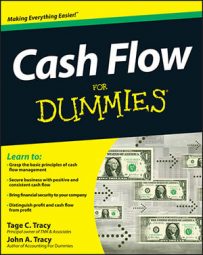Making profit generates cash flow. Any business owner knows that. But the actual increase in cash during a given period is invariably lower or higher than the profit number. The following points illustrate how cash flow relates to profit:
The amounts of cash flows during the period rarely are equal to the revenue and expense numbers in the P&L (profit and loss) report for the period.
Actions that lower cash flow: increasing accounts receivable and inventory; decreasing accounts payable and accrued expenses payable.
Actions that raise cash flow: decreasing accounts receivable and inventory; increasing accounts payable and accrued expenses payable.
Depreciation expense is not a cash outlay in the period recorded; neither is amortization expense; unusual losses recorded in the period may not involve cash outlay but rather be write-downs of assets or write-ups of liabilities.

